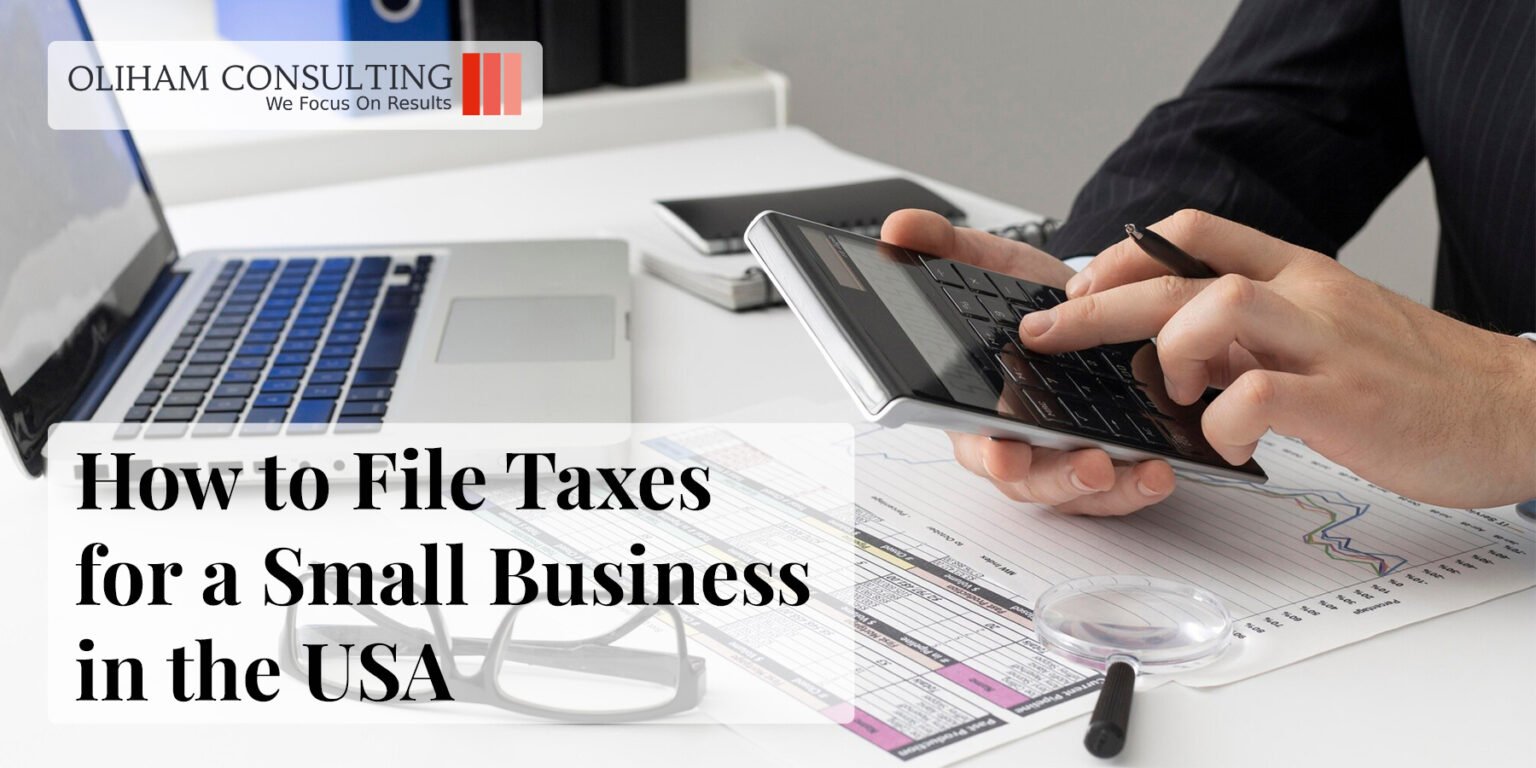Introduction: Understanding the Importance of Proper Tax Filing for Small Businesses
Small businesses face unique challenges when it comes to tax filing. Unlike larger corporations with dedicated accounting departments, entrepreneurs often wear multiple hats and handle various aspects of their business operations. Navigating the complex world of small business taxes requires knowledge, organization, and attention to detail.
Step 1: Determine Your Business Structure and its Tax Implications
Understanding the tax obligations associated with each business structure is essential to ensure compliance and optimize your financial situation. One common small business structure is a sole proprietorship. As a sole proprietor, you are personally responsible for all aspects of your business, including its taxes. Sole proprietors report their business income and expenses on their personal tax returns and are subject to self-employment taxes.
Another option is a partnership, where two or more individuals share ownership and responsibilities of the business. Partnerships also have specific tax considerations. Typically, partnerships file an informational return to report income and expenses, while individual partners report their share of profits or losses on their personal tax returns.
Limited Liability Companies (LLCs) provide liability protection for owners while offering flexibility in terms of taxation. LLCs can choose to be taxed as either a disregarded entity (like a sole proprietorship) or as a corporation (discussed later). The chosen tax classification determines how the income and expenses are reported.
S Corporations (S Corps) are another popular choice for small businesses due to their potential tax advantages. Unlike C Corporations that face double taxation at both corporate and individual levels, S Corps pass through profits and losses directly to shareholders’ personal tax returns. However, S Corps have specific eligibility requirements that must be met.
Step 2: Gather and Organize Your Financial Records and Documents
One of the key aspects of this process is keeping track of income statements. These statements provide an overview of your business’s revenue, allowing you to monitor its growth and identify any areas that may require attention. By organizing these statements, you can easily analyze trends and make informed decisions for the future.
Additionally, it is essential to keep a record of all expense receipts. These receipts serve as evidence of your business expenses and are necessary for claiming deductions during tax season. Organizing them systematically ensures that you have all the necessary documentation readily available when needed.
By diligently gathering and organizing your small business’s financial records and documents, you not only streamline your bookkeeping processes but also demonstrate professionalism and accountability. This step sets the foundation for accurate financial reporting, enabling you to make informed decisions that contribute to the success of your business.
Step 3: Understand the Different Types of Business Taxes You Need to Pay
Understanding the different types of business taxes is crucial for any entrepreneur or small business owner. By familiarizing yourself with these tax obligations, you can ensure that you are meeting your legal responsibilities and avoiding any potential penalties or fines.
One of the primary taxes that businesses need to pay is federal income tax. This tax is based on the net income earned by your business and is paid to the federal government. It’s important to accurately calculate and report your income to determine the appropriate amount of federal income tax owed.
In addition to federal income tax, self-employed individuals also have to pay self-employment tax. This tax covers Social Security and Medicare contributions for those who work for themselves. Understanding how this tax works and setting aside funds accordingly can help you avoid any surprises when it comes time to file your taxes.
State and local taxes are another consideration for businesses. These taxes vary depending on where your business operates, so it’s important to research the specific requirements in your state or locality. State taxes often include corporate income tax, franchise tax, or gross receipts tax.
Lastly, sales tax obligations are relevant for businesses that sell goods or services directly to consumers. Sales tax rates and regulations vary by state, so it’s essential to understand your responsibilities in collecting and remitting sales taxes appropriately.
By taking the time to understand these different types of business taxes, you can ensure compliance with legal requirements while effectively managing your finances. Seeking professional advice from a qualified accountant or tax specialist can also provide valuable guidance tailored specifically to your business needs.
Step 4: Familiarize Yourself with Small Business Tax Deductions and Credits
Understanding small business tax deductions and credits is essential for maximizing your savings and ensuring compliance with tax regulations. By familiarizing yourself with the various deductible business expenses, you can effectively reduce your taxable income and potentially lower your overall tax liability.
One important deduction to be aware of is the home office deduction. If you use a portion of your home exclusively for business purposes, you may be eligible to deduct expenses such as rent or mortgage interest, utilities, and maintenance costs associated with that space. This deduction can provide significant savings for entrepreneurs who operate their businesses from home.
Additionally, equipment depreciation deductions allow you to recover the cost of tangible assets used in your business over time. By spreading out the expense of equipment purchases, you can reduce your taxable income in each year that the asset is being depreciated.
Another valuable opportunity for small businesses is research and development (R&D) credits. These credits are designed to incentivize innovation by providing tax breaks for qualifying R&D activities. If your business invests in developing new products, processes, or software solutions, you may be eligible to claim these credits and further reduce your tax burden.
By taking advantage of these small business tax deductions and credits, you can optimize your financial position while ensuring compliance with applicable laws. It’s crucial to consult with a qualified accountant or tax professional who can guide you through the complexities of these deductions and help maximize your savings potential.
Step 5: Choose the Right Tax Form and Fill it Out Correctly
Choosing the right tax form and filling it out correctly is a crucial step in ensuring compliance and accuracy in your tax filing process. Understanding the different tax forms available and selecting the one that aligns with your business structure is essential to avoid potential errors or penalties.
One common tax form for small business owners is Schedule C, also known as “Profit or Loss from Business.” This form is used by sole proprietors and single-member LLCs to report their business income and expenses. It allows you to deduct eligible expenses related to your business activities, such as advertising, office supplies, and travel expenses.
For those operating as a C-Corporation, Form 1120 is the appropriate tax form. This form requires you to report your corporation’s income, deductions, credits, and taxes owed. It provides a comprehensive overview of your company’s financial activities throughout the year.
Partnerships are required to file Form 1065, which reports the partnership’s income, deductions, gains, losses, credits, and other relevant information. Additionally, each partner must receive a Schedule K-1 that outlines their share of the partnership’s profits or losses.
It is crucial to carefully review each tax form’s instructions to ensure accurate completion. Mistakes on these forms can lead to delays in processing or even trigger audits by the IRS. Consider seeking professional guidance from a certified public accountant or utilizing reputable tax software for assistance in navigating these complex forms accurately.
Step 6: Consider Hiring a Professional or Using Tax Software to Ensure Accuracy
When it comes to tax filing for small businesses, accuracy is of utmost importance. Step 6 involves considering two options to ensure the accuracy of your tax returns: hiring a professional tax preparer or utilizing tax software.
One option is to hire a professional tax preparer who specializes in working with small businesses. These tax professionals have the knowledge and expertise to navigate the complexities of business taxes, ensuring that all deductions and credits are properly accounted for. By outsourcing this task, you can focus on running your business while leaving the intricacies of tax preparation in capable hands.
Alternatively, you can opt for using tax software specifically designed for small businesses. These software solutions offer user-friendly interfaces and step-by-step guidance to help you accurately complete your tax returns. They often come equipped with built-in error checks and calculations, reducing the risk of mistakes or omissions.
Both options have their own set of benefits. Hiring a professional provides personalized assistance and ensures that your taxes are prepared by an experienced expert. On the other hand, using tax software offers convenience, cost-effectiveness, and the ability to file at your own pace.
Conclusion: Successfully Navigating Small Business Tax Filing Can Help You Avoid Penalties and Maximize Your Tax Savings
In conclusion, successfully navigating small business tax filing is crucial for avoiding penalties and maximizing your tax savings. By understanding the intricacies of the tax code and staying organized throughout the process, small business owners can ensure compliance with tax regulations and avoid costly penalties.





